How to choose an adequate plot for a field trial
In any experiment, the conditions under which it is carried out are a factor that must be taken into account when designing, executing and interpreting the results of the experiment. Within the world of phytosanitary products, one of the aspects to consider is the correct choice of land or plot in which the field trial will be developed. In the following lines, we will provide some ideas so that this decision is supported by solid criteria.
When designing trials with phytosanitary products for different purposes it is essential to control and measure all the variables that can influence in one way or another in the results that are recorded. The characteristics and properties of the soil in which the test is carried out can condition the mode of action of the product.
The field trials on Plant Protection Products can have different objectives, such as knowing the effectiveness against certain pests or at different doses, finding out the resistance they cause in pathogens, knowing their effects on crop yield, their phytotoxicity or negative consequences on organisms that they are not their objective and that, even, they can be beneficial for the harvests.
How to choose a field trial plot according to Good Experimental Practices (GEP)
The Good Experimental Practices (GEP) encompass a series of standards that ensure the knowledge of the efficacy, phytotoxicity and adverse effects of plant protection products. Thanks to the GEP, together with the mutual recognition between European Union countries, the results obtained in a given country are valid for the rest of the member countries.
The choice of an adequate field trial plot for Good Experimental Practices is a process for which a considerable number of factors related to physical, chemical, biological, logistical and organizational aspects must be taken into account.
As for the plot itself, it must be homogeneous, without irregular edges, preferably with a rectangular shape, according to the type of application and machinery used. You can enable a corridor between plots, in order to facilitate subsequent evaluations, as well as ensuring a margin of safety between each of them to avoid the effect of cross-treatment. Finally, they must be labeled clearly and correctly.
Regarding its size, this will depend on aspects such as the equipment for the application of the product, the homogeneity of the pest that is going to be treated and the type of evaluation to be carried out.
Different distributions of the test plots
Another aspect to consider in the design of an experiment that meets the requirements established by the GEP is that of the spatial location of the different plots on which it is going to be tested. There are several possible distributions of them, which we will describe next.
Completely randomized design
The plots are distributed completely randomly. This situation is advisable when the terrain is sufficiently homogeneous, since otherwise, the residual variance may be too high. In the completely randomized design, a different treatment is tested in each plot.
Let’s take an example of 8 theses with 4 repetitions each.
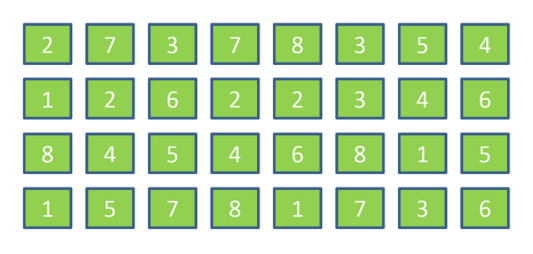
Design in completely randomized blocks
In situations in which the heterogeneity of the terrain is a characteristic to be considered and there is more than one factor to be taken into account in the field trial, it is advisable to divide the field into different blocks that are as homogeneous as possible, these blocks being heterogeneous with each other.
These blocks, in turn, are subdivided into plots on which the different treatments will be applied randomly. The most usual is that each treatment is applied only once in each block.
The shape of the plots can affect the layout of the plots within blocks. The elongated plots are often arranged with their larger sides located adjacently, while the square plots can maintain another spatial distribution.
The different blocks do not have to be placed together, but they can be scattered. For this situation to occur, it is necessary to have a thorough knowledge of the land, so that we have controlled the variables that give heterogeneity to it.
With this form of distribution of the field trial plots, we managed to reduce the experimental error that is associated with the heterogeneity of the cultivation area in some decisive aspect for the purpose of the field trial, increasing the precision of the procedure. Some design schemes in completely randomized blocks are the following:

Design in split plot
This distribution is applied in cases in which there is heterogeneity in the field and, in addition, some of the influential factors in the field trial cannot be completely randomized in the plots of a block.
An example of this would be a trial in which two variables are studied: product and irrigation equipment. In this case, the product is an easy factor to modify, while the irrigation machinery is not so much, since they usually have specific sizes and cannot be adapted to the dimensions of each plot.
In this distribution modality for each case to be treated, the land is divided into larger blocks and, in turn, these are subdivided into smaller plots. In this scheme, randomization is carried out twice. An example would be:
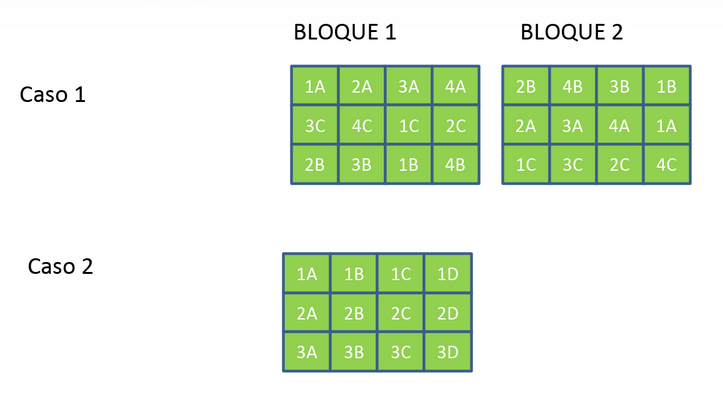
With the design in Split Plot, costs derived from the costly modification of one of the factors are saved. In addition, their results are statistically of higher quality for the situations described previously.
Types of management of control plots
Finally, the location of the control plots must be considered, which those to which no treatment has been applied are.
Its distribution can be varied, as shown in the following schemes:
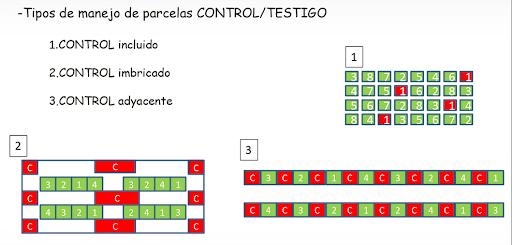
If a statistical test is being carried out, we must use an included control.
If the heterogeneity of the terrain is high, the adjacent control is the most appropriate.
The imbricated control will be ideal in a situation where the heterogeneity of the terrain is moderate or low and there is no interference between the test plots and the control plots.
The choice of an adequate plot for the testing of our products is a fact to which we should not downplay. An appropriate design of the land on which it is going to work will make our work much easier, making us obtain reliable, exact and reproducible results. This latter is essential if we carry out field trials according to the established criteria of the Good Experimental Practices.
Just as it is essential to start building a house on the foundations, with the field trials it is critical to design them, taking as a starting point a perfect knowledge of everything that provides useful information about it. It is such an important aspect that the European and Mediterranean Plant Protection Organization published a standard for the design and analysis of the field trials.



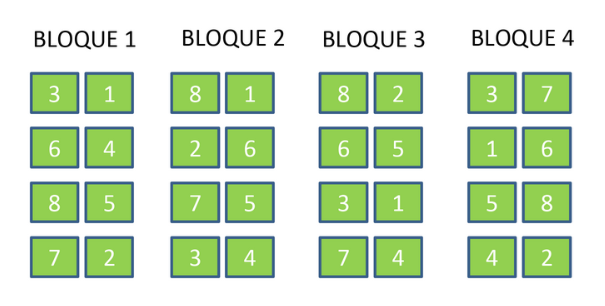

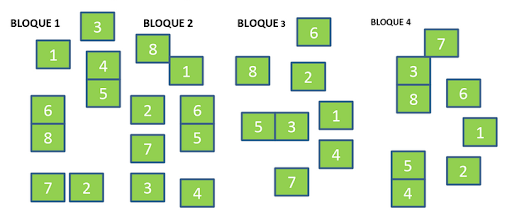
Leave a Reply